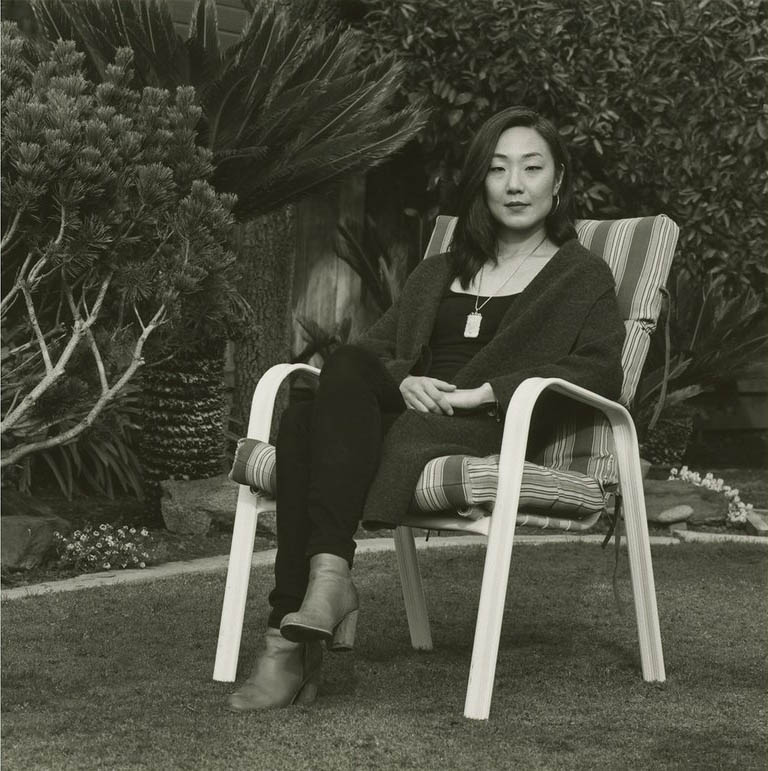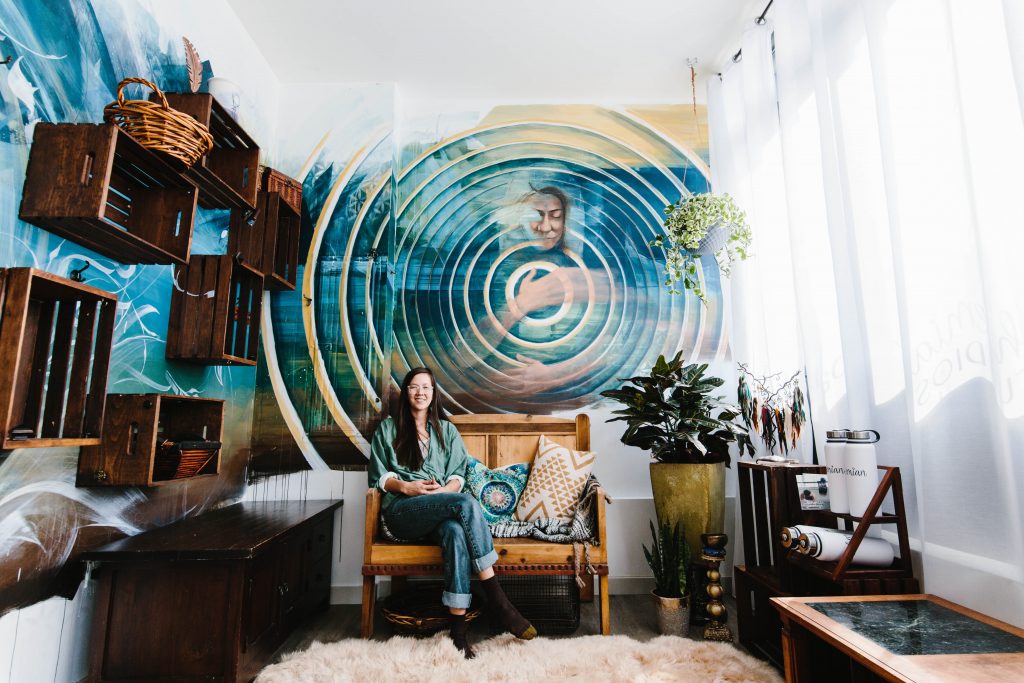April 3, 2019
We’re pleased to introduce the two artists who will receive 2019 Densho Artists Initiative funding! Out of a wide selection of gifted artists and their powerful proposals, Brynn Saito and Mari Shibuya submitted ideas that we felt had the greatest potential to provoke important dialogues about trauma, healing, and the legacy of Japanese American WWII incarceration as it relates to contemporary injustices. We are also pleased to share that we were able to give several additional artists smaller grants, and we’ll be sharing their work throughout the year. Follow Densho on Facebook, Instagram, and Twitter for updates on these projects and for opportunities to engage.
Brynn Saito: Poet, Writer, Professor, Organizer

Brynn will create and distribute “Intimate Ecologies,” (working title), a hybrid-genre, multimedia lyric essay collecting poetry, prose reflections, photographs, and pedagogical questions related to the Japanese American incarceration. “Intimate Ecologies” will draw on three sources: primary documents from Densho’s Gila River and Poston archival collections; site visits and poetry-based explorations of the Gila River (permission depending) and Poston camps; and secondary source material about the WWII incarceration and its aftermath. “Intimate Ecologies” will be published as an open source e-chapbook and as a limited-edition printed chapbook for use in college classrooms and community learning spaces. Densho will also work with Brynn to find other creative ways to share elements of the chapbook in digital and physical spaces.
“I have come to understand my work (teaching, poem-making, community-building,
Brynn Saito
and writing) as ancestral work. The closer I get to my family’s stories of immigration, incarceration, and survival, the more I understand how history’s rushing forces make and remake us. As a yonsei poet, I draw closer to my family’s stories in an attempt to transmute trauma through the energy of art and the act of communal sharing.”
Brynn Saito is a poet, educator, and organizer. She is the author of two books of poetry from Red Hen Press, Power Made Us Swoon (2016) and The Palace of Contemplating Departure (2013), winner of the Benjamin Saltman Award, and a finalist for the Northern California Book Award. She also co-authored, with Traci Brimhall, the chapbook Bright Power, Dark Peace (Diode Editions, 2016). Brynn is a recipient of the Kundiman Poetry Fellowship and a two-time recipient of the California State Library’s Civil Liberties Public Education grant. Along with Fresno artist, farmer, and writer, Nikiko Masumoto, Brynn co-founded and co-directs Yonsei Memory Project (YMP). YMP utilizes arts-based inquiry to generate dialogue connecting the WWII incarceration of the Japanese American community with current struggles for justice. Korean American and Japanese American, Brynn was born and raised in Fresno, CA. Currently, she is an Assistant Professor of Creative Writing in the English Department at Fresno State.
Mari Shibuya: Facilitator, Muralist, and Artist

Mari will create a public art piece informed by dialogues about the impact of Japanese American incarceration on our lived experience. She will host three sessions in which an intergenerational group of Japanese Americans convene in Seattle to share stories and lived experiences, as well as to explore these questions: How has incarceration impacted the culture of what it means to be Japanese American? How does the trauma of incarceration live in the recent generations, the past generations, and how is this trauma inevitably going to be passed on to future generations? What does it look like to honor our history and give ourselves the space to dream into a new story around incarceration and reparations? How can we use the experience of Japanese Americans to bring visibility to how race-based persecution, fear and prejudice live in our culture today? What is our hope for the future?
For the public art component, Mari will utilize her passion for image transfers, mixed media figurative painting, and geometry to create a mural based on the three group sessions as well as photographs from Densho’s archives.
“Stories hold great power. The space to slow down and witness each other in a group process is deeply transformational. My vision is to structure these sessions combining the interpersonal practices of organizations such as New Stories, YES Jams, Authentic Revolution, and Partners for Youth Empowerment. I will use these practices to create a facilitated experience that cultivates community and creativity to envision what healing and integration look like.”
Mari Shibuya
Mari Shibuya is a fourth generation Japanese American. A West Coast Native, Mari was born in California and raised in the Renton, Washington area. She currently lives and works as a facilitator, muralist, and artist in Seattle. As a Facilitator, Mari works with organizations such as Partners for Youth Empowerment (PYE), Young Women Empowered (Y-WE), Urban Artworks, Gage Academy, and NewStories. In her work with these organizations, Mari focuses on the power of creativity, arts-based practices and storytelling as an avenue for empowering individuals to find their voice, create connection, inspire transformation and develop leadership. As an artist, Mari strives to create work that reflects on our interconnectedness and create space to contemplate the forces that give rise to our human experience. As a Muralist, Mari creates work for both public and private commission in addition to leading groups in mural processes. Woven through all of Mari’s work is a deep commitment to creative collaboration and honoring the wisdom of place, culture, and community.
—
Header photo: Original WRA caption: Tule Lake Relocation Center, Newell, California. An evacuee girl proudly shows friends her art work which was on display in the exhibit shows held on labor day. September 7, 1942. Photo by Francis Stewart, courtesy of the National Archives and Records Administration.
This is opportunity is made possible thanks in part to funding from ArtsFund.

